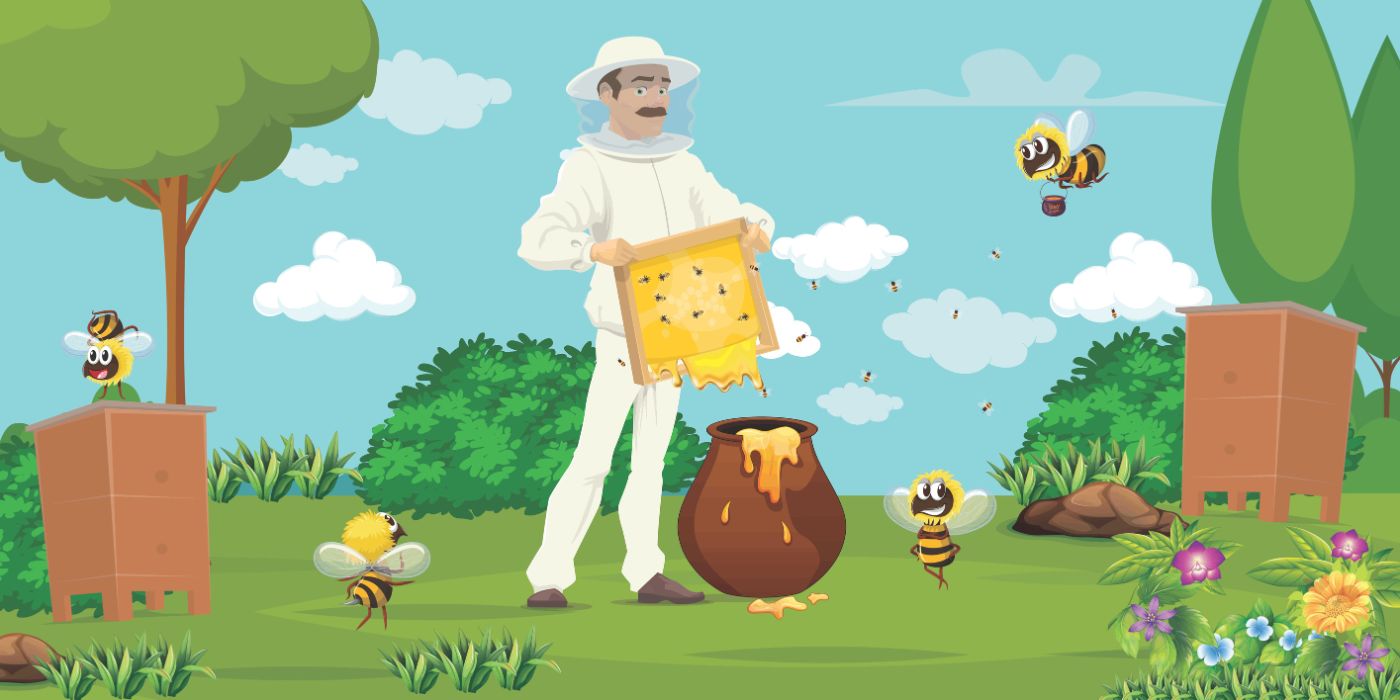
Honey Harvesting Hacks | Maximize Your Yield While Keeping Bees Happy
Harvesting honey is one of the most rewarding aspects of beekeeping. After months of diligent care and hive management, it’s finally time to enjoy the fruits of your buzzing friends' hard work. However, honey harvesting is more than just scooping out sweet, golden nectar. It requires thoughtful strategies to maximize your yield while ensuring that your bees remain happy, healthy, and productive.
In this blog, we'll share practical techniques and tips for efficient and ethical honey harvesting to help you achieve a bountiful harvest without compromising your colony's well-being.
1. Know the Right Time to Harvest Honey
Timing is everything when it comes to honey harvesting. Harvesting too early can lead to unripe honey that ferments and spoils, while waiting too long can reduce your yield as bees consume their reserves.
Key Indicators for Harvesting:
-
Capped Honey: Look for frames with at least 80% of the honey cells sealed with wax caps. This indicates that the honey is fully ripened and ready for extraction.
-
Honey Consistency: If you’re unsure, shake a frame gently. If nectar drips out, it’s not ready. Fully ripened honey should remain intact.
Be mindful of weather conditions. Harvesting during warm, dry weather is ideal since honey will have a lower moisture content, reducing the risk of spoilage.
2. Use Smoke Strategically and Gently
Using a bee smoker is essential for calming the colony during honey harvesting. However, excessive smoke can agitate bees and affect the flavor of the honey.
Tips for Using a Smoker:
-
Use natural, non-toxic fuel like pine needles or wood chips.
-
Puff a small amount of smoke at the hive entrance and under the inner cover.
-
Avoid smoking directly on the frames, as it can taint the honey.
The goal is to create a calm environment, not overwhelm the hive.
3. Choose the Right Harvesting Method
There are several methods for extracting honey, depending on your equipment and experience level.
Common Honey Extraction Methods:
-
Traditional Frame Extraction: Use a honey extractor to spin frames and remove honey efficiently. This method preserves the comb for reuse.
-
Crush and Strain Method: Ideal for beginners or hobbyist beekeepers without extraction equipment. This involves crushing the comb and straining out the honey, though it sacrifices the comb.
-
Flow Hive System: A modern, less invasive option where honey flows directly from the hive into jars. It minimizes disturbance to the bees.
Each method has its pros and cons, so choose one that aligns with your beekeeping goals and resources.
4. Protect the Comb for Future Use
Bees invest a significant amount of time and energy building comb, which is essential for brood rearing and honey storage. Preserving the comb during extraction allows your bees to focus on making more honey rather than rebuilding from scratch.
Tips for Comb Preservation:
-
Handle frames gently to avoid damage.
-
Use an uncapping knife or fork to carefully remove wax caps.
-
Store extracted frames back in the hive promptly to encourage the bees to clean and reuse them.
Reusing comb saves time and boosts honey production in future harvests.
5. Minimize Bee Stress During Harvest
Harvesting can be stressful for bees, especially if their honey reserves are significantly reduced. Ethical beekeeping practices ensure that your colony remains strong and healthy.
Ethical Harvesting Tips:
-
Leave Enough Honey: Always leave at least 30-50 pounds of honey for the bees to survive through the winter.
-
Be Gentle: Avoid unnecessary hive disruptions and handle frames with care.
-
Inspect for Pests: Use the harvest as an opportunity to check for signs of pests or diseases and address any issues promptly.
A happy, healthy hive is more likely to produce abundant honey in the long run.
6. Maintain Clean Equipment
Clean equipment is crucial for high-quality honey and hive health. Residue from previous harvests can attract pests or contaminate the honey.
Cleaning Tips:
-
Sanitize your honey extractor, uncapping tools, and storage containers after each use.
-
Use food-safe cleaning solutions and rinse thoroughly.
-
Dry equipment completely before storage to prevent mold or rust.
Clean equipment ensures that your honey remains pure and safe for consumption.
7. Store Honey Properly
Proper storage is essential for maintaining the flavor, texture, and quality of your honey.
Storage Tips:
-
Use airtight, food-grade containers to prevent moisture absorption and contamination.
-
Store honey in a cool, dark place away from direct sunlight.
-
Label jars with the harvest date for easy tracking.
Remember that honey is naturally shelf-stable and can last indefinitely if stored correctly.
Honey harvesting is both an art and a science, requiring careful attention to timing, techniques, and hive management. By following these practical tips, you can maximize your honey yield while keeping your bees happy and thriving.
Ethical and efficient harvesting practices not only benefit your colony but also ensure that you enjoy high-quality honey for months to come. Whether you’re a seasoned beekeeper or just starting, remember that the health and well-being of your bees should always come first. After all, a happy hive is a productive hive. Happy harvesting!
FAQs
Q1: How often should I harvest honey?
Most beekeepers harvest once or twice a year, depending on hive strength and nectar flow.
Q2: Can I harvest honey from a first-year hive?
It’s best to wait until the second year, allowing the colony to establish itself.
Q3: How do I know if honey is fermented?
Fermented honey has a sour smell and bubbles. It usually results from excess moisture.
Q4: What should I do with leftover beeswax?
You can make candles, lip balms, or furniture polish with beeswax.
Q5: Can I eat honey with bits of wax?
Yes! Wax is natural and edible, though some prefer to strain it out.



Leave a comment